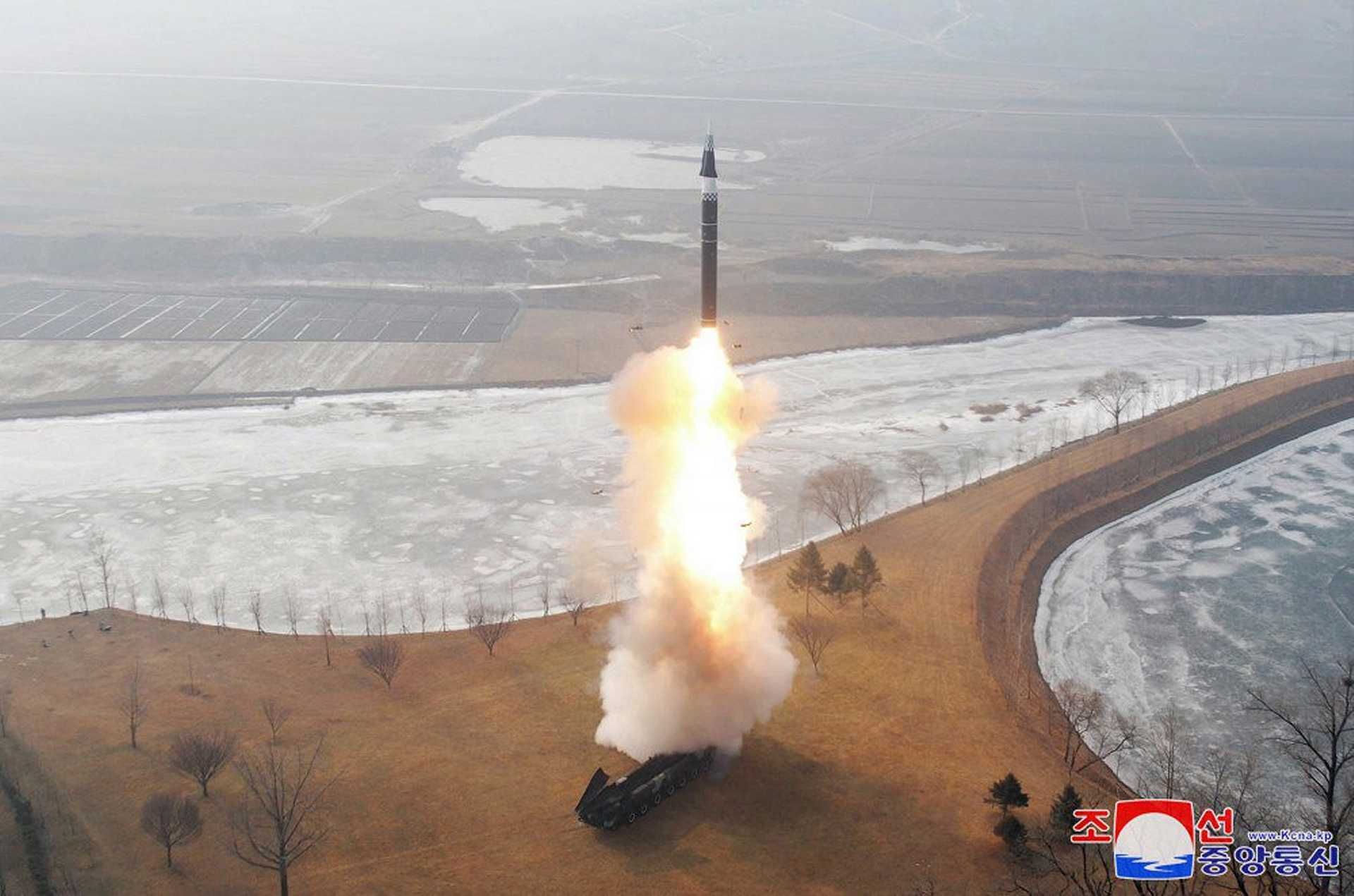Breaking News
Analysis: North Korea’s Hypersonic Missile Test Escalates Regional and Global Security Threats.
On Monday, January 6, 2025, North Korea conducted a test launch of an intermediate-range ballistic missile (IRBM) tipped with a hypersonic warhead, a move that has sharply elevated security concerns in the region and beyond. The missile, reportedly traveling 1,500 kilometers at a velocity of Mach 12—12 times the speed of sound—represents a significant escalation in Pyongyang’s missile technology. The test, personally supervised by North Korean leader Kim Jong-un, was described by state media as a pivotal step in bolstering the country’s defensive capabilities.
Follow Army Recognition on Google News at this link

North Korea test-fires a hypersonic missile on January 6, 2025, escalating regional and global security threats (Picture source: North Korea press agency)
According to the Korean Central News Agency (KCNA), the hypersonic missile is designed to “reliably contain any rivals in the Pacific region that can affect the security of our state.” The South Korean military, which detected the launch, confirmed the missile’s trajectory from the Pyongyang area and noted it flew approximately 1,100 kilometers before landing in the East Sea (Sea of Japan). This marked North Korea’s first missile test of 2025 and underscored its intent to continue advancing its weapons programs despite international sanctions and diplomatic efforts.
The test’s strategic implications are profound, particularly due to the hypersonic technology employed. Hypersonic missiles travel at speeds exceeding Mach 5, but their defining feature is their ability to maneuver unpredictably during flight. This combination of speed and agility makes them exceptionally difficult to detect, track, and intercept using existing missile defense systems. North Korea’s reported success in achieving a speed of Mach 12 amplifies these challenges, as regional defense systems, such as the U.S.-deployed Terminal High Altitude Area Defense (THAAD) in South Korea or Japan’s Aegis-equipped destroyers, would have little time to respond.
The missile’s range of 1,500 kilometers also underscores its potential to strike critical U.S. military installations in the Pacific, including those in Guam. These bases serve as key hubs for U.S. operations in the Indo-Pacific, providing logistical and strategic support to regional allies. A credible hypersonic missile capability targeting these installations fundamentally shifts the balance of power in the region, directly challenging U.S. military supremacy and deterrence.
For South Korea, the proximity to North Korea amplifies the threat. Hypersonic missiles reduce detection and response times to such an extent that key South Korean cities, military installations, and infrastructure are left highly vulnerable. South Korea’s current political instability further complicates the situation. Following a failed attempt to impose martial law, President Yoon Suk Yeol was impeached, leaving the nation’s leadership in disarray. This internal crisis has weakened South Korea’s ability to respond cohesively to North Korea’s provocations, exposing significant gaps in its national security.
The test also sends a strong message to the United States, which is in a transitional political phase as President-elect Donald Trump prepares to take office on January 20, 2025. Analysts suggest the timing of the test was deliberate, aimed at leveraging the period of U.S. political uncertainty to demonstrate North Korea’s growing military prowess. By showcasing its hypersonic capability, Pyongyang is signaling its readiness to challenge the new U.S. administration while positioning itself for future negotiations.
The test’s implications for Japan are equally alarming. The missile’s flight path into the East Sea (Sea of Japan) highlights Japan’s vulnerability to North Korea’s missile arsenal. As a close U.S. ally and a key regional security player, Japan will likely face intensified pressure to upgrade its missile defense systems to counter the hypersonic threat. This could trigger a broader arms race in the Indo-Pacific as nations seek to develop advanced defensive and offensive capabilities in response to North Korea’s actions.
On a broader scale, North Korea’s successful hypersonic missile test threatens to destabilize the regional security environment. Hypersonic weapons pose unique challenges to the existing global security architecture, as their speed and maneuverability undermine traditional missile defense systems. This development could accelerate the proliferation of hypersonic technologies, with other nations racing to match or counter North Korea’s advancements.
The international community, particularly through the United Nations Security Council, faces the difficult task of addressing this latest provocation. However, longstanding divisions among major powers such as China, Russia, and the United States complicate the prospect of unified action. Meanwhile, regional allies like South Korea and Japan will need to invest heavily in next-generation missile defense systems, including space-based sensors and counter-hypersonic technologies, to address this emerging threat.
The risks of miscalculation are also rising. The combination of North Korea’s provocative actions, South Korea’s political turmoil, and the U.S. leadership transition creates a volatile environment where even minor incidents could spiral into more significant conflicts.
Monday’s hypersonic missile test marks a turning point in North Korea’s weapons program, signaling its growing capability to threaten regional stability and global security. As Pyongyang continues to refine its hypersonic technology, the urgency for a coordinated response by the United States, its allies, and the broader international community has never been greater. Without decisive action, North Korea’s advancements risk emboldening the regime and heightening tensions in an already precarious Indo-Pacific region.


























